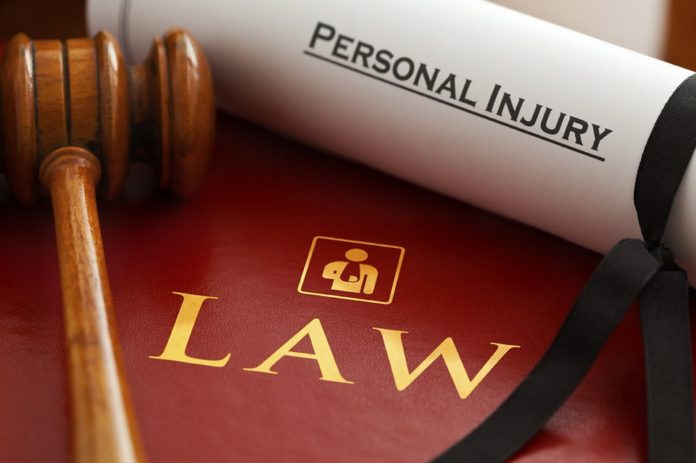In just five years, fatal traffic crashes in Austin have risen by more than 93 percent. With this rise, there has been a drastic increase in the case numbers. After an injury from a fall, car accident, or a sport, the damage may not be noticeable for you for a while. Such injuries are most prevalent in the neck and back region. They can take hours, days, or even weeks to manifest themselves, depending on their severity. When they do, though, they do so with a great deal of discomfort and agony. They may present themselves in the form of pain, inflammation, and irritation. The effect of debilitating back and neck pain can make a patient’s life go out of order.
To help you get on the road to recovery, your doctor will recommend spinal decompression to prevent the damage from worsening. This particular therapy, which can be either surgical or non-surgical, has proven to be a ray of hope for healing for many accident injury patients. To help you out, the prospects of finding spinal decompression clinics are highly likely.
However, if you feel spinal decompression is not for you, your chiropractor might also advise you to take on alternative treatment to help soothe your agony. But before you choose either of these approaches, you should know what spinal decompression is.
What is Spinal Decompression?
Spinal decompression is a type of practice used to relieve surging back pain you might get from an accident. It is popular among accident injury doctors as they think it is the best method for their patients to get better. This particular treatment works by stretching the spine to a great extent. The stretching alters the location of the vertebrae and takes the extra force off of them. This adjustment produces negative pressure, which helps relieve the stress on the spinal discs, which are gel-like cushions between the bones in the spine. Due to this, the bulging or herniated discs get compressed and relieve pressure on the surrounding nerves while allowing them to regain their natural height.
Healing is aided by a greater flow of nutrients, water, and oxygen to the injury site when the pressure is released. Non-surgical decompression is a powerful method for treating injuries and relieving pain, allowing the discs and spine to function at their best. This treatment will last anywhere from 30 to 45 minutes, and you may need 20 to 28 treatments spread out over five to seven weeks.
In What Conditions Should You Get Spinal Decompression?
Many accident injury patients suffer from spinal cord injuries, for which they have to resort to spinal decompression. Total spinal cord injury and partial spinal cord injury are the two different forms. Spinal decompression might be your only way to recovery if your accident injury doctor diagnoses you with either of the following:
- If the permanent damage to the spine leaves lasting effects, this results in a complete spinal cord injury. Total spinal cord injuries result in paraplegia or tetraplegia.
- A partial spinal cord injury refers to an incomplete spinal cord injury. The capability to move and the sensation levels depend on the area and severity of your damage. The wellbeing and medical history of a patient determine the outcome.
- Thoracic Spinal Fracture
The thoracic spine’s location is in the middle and upper back. It is designed to keep the body upright and stable. It binds the cervical and lumbar spines, which are found in the neck and lower back. If you suffer from an accident, you may feel pain from the back to the front of the chest. The spinal pain can radiate through the arms, legs, or across the rib cage. In very exceptional cases, it can stem from the neck as well. These specific areas of pain will lead your accident injury doctor to diagnose you with Thoracic Spine Fracture. When a bone in the spine collapses, it causes a thoracic spine fracture, also known as a vertebral compression fracture. It is the most common area to be affected in the thoracic spine’s lower vertebrae. The majority of thoracic spine fractures occur due to an accident, such as a car accident, a fall, or a sports injury.
- Sciatica
When the nerves that constitute sciatic nerves are pinched, squeezed, or inflamed, sciatica develops. It starts affecting the body from the hip, down the leg, and to the foot. If you have been in an accident, chances are you might have sciatica. How would you know? The pain you feel will range from mild to intense. Your accident injury doctor will diagnose it to run along the sciatic nerve. It also induces muscle weakness and a numb, tingling sensation in the toes, leg, and foot. Spinal decompression therapy is the best way to go if you prefer a non-invasive treatment for this accident injury.
- Lumbar Spinal Cord Injury
The lumbar spine is the lowest and most significant part of the spinal cord. Since the lumbar spine bears the most weight of any part of the spine, the vertebrae are comparatively thick. Injury to the spinal cord in the lumbar vertebrae usually causes some loss of control in the hips and legs, but not the upper body. If you have been in an accident, there can be a risk of you suffering from this particular spinal cord injury. People with lumbar spinal cord injuries have little or no voluntary control over their bowel or bladder, but with the right equipment, they can handle themselves. Depending on leg strength, the injured person may need a wheelchair or braces to walk. These accident injury victims opt for spinal decompression to help them get out of this physical rut.
If you are still contemplating if you should get spinal decompression, read on for its pros that might help with the decision-making.
What Are The Benefits of Spinal Decompression?
- It relieves any pressure you might feel from an injury. Accident injury doctors go for spinal decompression therapy to treat disc problems that cause neck pain. It leads to all the pressure on the discs between the vertebrae to be relieved.
- Decompression therapy strengthens the muscles in the treated region, which helps to stabilize the neck over time. In return, this makes it impossible for neck pain to resurface as how it was before. With consistent maintenance and with the help of spinal decompression therapy, you can stay on the road to recovery.
- Non-surgical spinal decompression will lead your accident injury doctor to correct possible spinal musculoskeletal problems. They may do this by relieving pressure and improper vertebral motions that can damage the discs. In return, it can reverse wear and tear and provide increased mobility.
- The release of force is regulated, thus improving blood flow and the ability of nutrients to help in the disc healing process.
- Spinal decompression is a technique that gently stretches the spine, changing the force and direction of the backbones. After a few sessions of spinal decompression, positive outcomes aid in the retraction of the discs, resulting in a safe structural improvement to your spine that relieves neck pain.
Final Thoughts
Following an accident, it is critical to get treated and begin chiropractic care. So head on over to a clinic for spinal decompression in Austin for a complete and speedy recovery.









